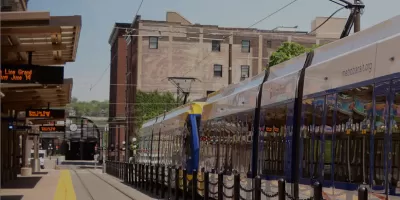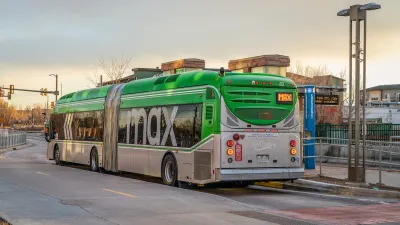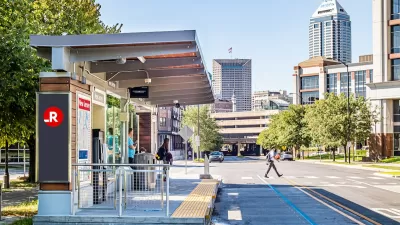Officials are eyeing a plan that could replace a proposed streetcar line with a bus rapid transit line.

A new proposal for an ‘arterial bus rapid transit’ (aBRT) line that would connect downtown St. Paul with the Minneapolis-St. Paul International Airport could cost a billion dollars less than a proposed streetcar alternative, reports Janet Moore in the Star Tribune. “The so-called Riverview Corridor would join a growing stable of aBRT routes throughout the metro, a popular service that features heated and well-lit stations, payment-before-boarding, and 10-minute service during peak hours.”
This form of rapid transit would run in traffic but receive signal priority and include pre-paid fares, heated and well-lit stations, and 10-minute headways at rush hours. aBRT would use existing infrastructure, contributing to the project’s much lower cost. The county also estimates the streetcar would be roughly five minutes slower than aBRT. “The Federal Transit Administration (FTA) is expected to pay about half of the cost of the streetcar project, with Ramsey and Hennepin counties paying the rest. The bus would be funded mostly with state and local money.”
FULL STORY: Vastly cheaper alternative to a St. Paul streetcar emerges. It's a bus.

Maui's Vacation Rental Debate Turns Ugly
Verbal attacks, misinformation campaigns and fistfights plague a high-stakes debate to convert thousands of vacation rentals into long-term housing.

Planetizen Federal Action Tracker
A weekly monitor of how Trump’s orders and actions are impacting planners and planning in America.

San Francisco Suspends Traffic Calming Amidst Record Deaths
Citing “a challenging fiscal landscape,” the city will cease the program on the heels of 42 traffic deaths, including 24 pedestrians.

Defunct Pittsburgh Power Plant to Become Residential Tower
A decommissioned steam heat plant will be redeveloped into almost 100 affordable housing units.

Trump Prompts Restructuring of Transportation Research Board in “Unprecedented Overreach”
The TRB has eliminated more than half of its committees including those focused on climate, equity, and cities.

Amtrak Rolls Out New Orleans to Alabama “Mardi Gras” Train
The new service will operate morning and evening departures between Mobile and New Orleans.
Urban Design for Planners 1: Software Tools
This six-course series explores essential urban design concepts using open source software and equips planners with the tools they need to participate fully in the urban design process.
Planning for Universal Design
Learn the tools for implementing Universal Design in planning regulations.
Heyer Gruel & Associates PA
JM Goldson LLC
Custer County Colorado
City of Camden Redevelopment Agency
City of Astoria
Transportation Research & Education Center (TREC) at Portland State University
Jefferson Parish Government
Camden Redevelopment Agency
City of Claremont





























